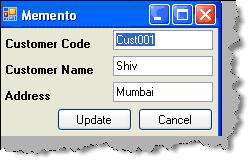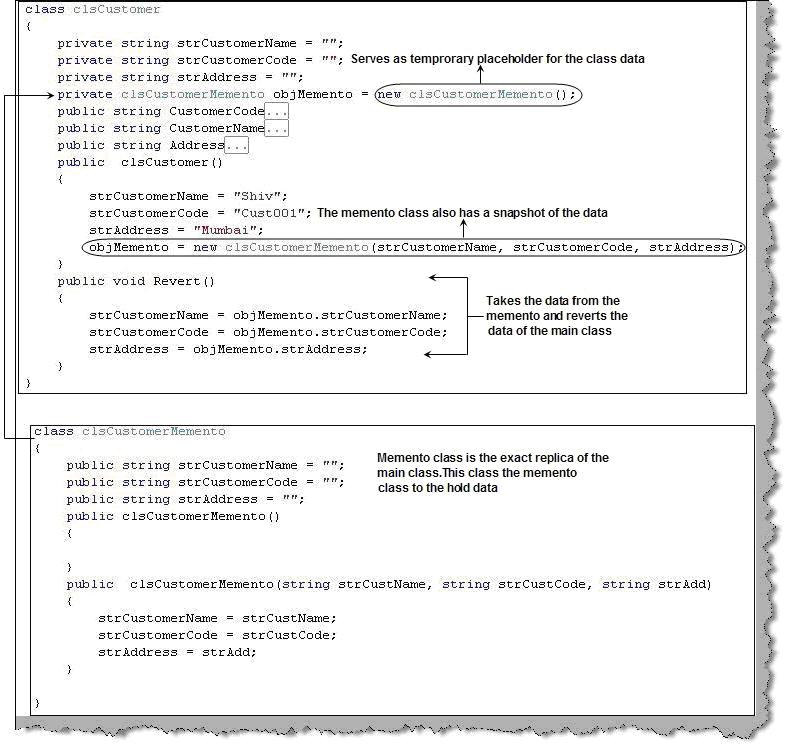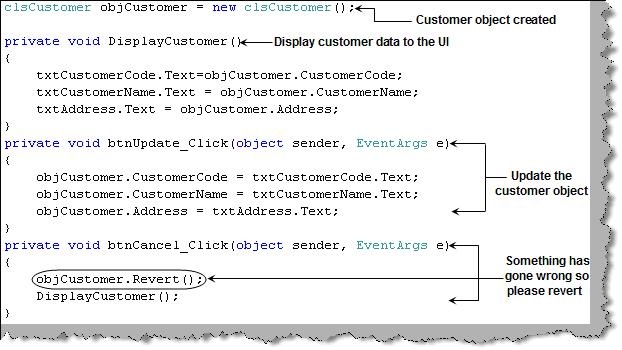Memento pattern is the way to capture objects internal state with out violating encapsulation. Memento pattern helps us to store a snapshot which can be reverted at any moment of time by the object. Let’s understand what it means in practical sense. Consider figure ‘Memento practical example’, it shows a customer screen. Let’s say if the user starts editing a customer record and he makes some changes. Later he feels that he has done something wrong and he wants to revert back to the original data. This is where memento comes in to play. It will help us store a copy of data and in case the user presses cancel the object restores to its original state.
 Figure: – Memento practical example
Figure: – Memento practical example
Let’s try to complete the same example in C# for the customer UI which we had just gone through. Below is the customer class ‘clsCustomer’ which has the aggregated memento class ‘clsCustomerMemento’ which will hold the snapshot of the data. The memento class ‘clsCustomerMemento’ is the exact replica ( excluding methods ) of the customer class ‘clsCustomer’. When the customer class ‘clsCustomer’ gets initialized the memento class also gets initialized. When the customer class data is changed the memento class snapshot is not changed. The ‘Revert’ method sets back the memento data to the main class.
 Figure: – Customer class for memento
Figure: – Customer class for memento
The client code is pretty simple. We create the customer class. In case we have issues we click the cancel button which in turn calls the ‘revert’ method and reverts the changed data back to the memento snapshot data. Figure ‘Memento client code’ shows the same in a pictorial format.
 Figure: – Memento client code
Figure: – Memento client code